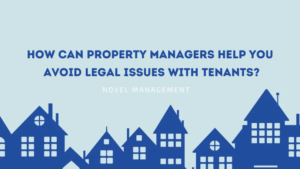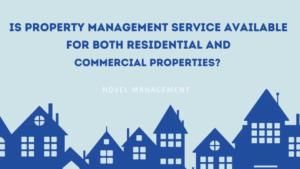One of the most critical documents you’ll ever create as a landlord is the lease agreement. This legal contract outlines the terms and conditions of the rental arrangement between you and your tenant. Crafting a solid lease agreement is essential for protecting your interests, clarifying expectations, and ensuring a smooth landlord-tenant relationship.
In this guide, we’ll explore the different aspects of lease agreements, essential components, key clauses, and the significance of disclosures. Here are some different ways to structure lease agreements to meet your specific needs and ensure legal compliance:
Ways to Structure a Lease Agreement
Here’s a look into different methods of structuring lease agreements and their implications for both landlords and tenants:
- Lease Types – Lease agreements come in various forms, such as fixed-term and month-to-month. Fixed-term leases typically last for a specified period, usually a year, while month-to-month leases renew automatically each month until terminated by either party.
- Lease Terms – When drafting a lease agreement, it’s essential to tailor the terms to meet your specific requirements as a landlord. This includes determining the rent price, due date, late fees, and any other conditions you deem necessary.
The Significance of Lease Agreements
Here’s the significance of lease agreements and how they play a crucial role in facilitating smooth and transparent rental transactions:

Legal Protection for Landlords and Tenants
A well-written lease agreement serves as a legal document that protects both landlords’ and tenants’ rights. It outlines each party’s obligations and recourse in the event of disputes or breaches of contract.
Clarifying Rights and Responsibilities
By clearly defining rights and responsibilities, a lease agreement helps prevent misunderstandings and conflicts between landlords and tenants. It specifies who is responsible for maintenance, repairs, utilities, and other aspects of property management.
Establishing Financial Terms and Conditions
The lease agreement establishes the financial terms and conditions of the rental arrangement, including the rent amount, payment schedule, security deposit, and consequences for late or missed payments.
Essential Components of Every Lease
To create a comprehensive lease agreement, certain essential components must be included to protect both landlords’ and tenants’ interests. Consider the following components and their significance in laying a sturdy foundation for the rental relationship:
- Identifying Parties and Property Details – The lease agreement should identify the parties involved and provide detailed information about the rental property, including its address and any amenities included.
- Specifying Lease Duration – The lease should state the duration of the tenancy, whether it’s a fixed-term lease or a month-to-month arrangement.
- Defining Rent Payment Terms – This section specifies the amount of rent, the due date, accepted payment methods, and any penalties for late payments.
- Ensuring Agreement with Signatures – Both the landlord and the tenant must sign the lease agreement to indicate their agreement to its terms and conditions.

Key Clauses and Policies for Comprehensive Leases
Let’s dive into the essential clauses and policies that landlords should include in their lease agreements to protect their interests and ensure a smooth rental experience for all parties involved:
Property Access Guidelines
Defining when and under what conditions landlords may access rental properties is essential for upholding the privacy and rights of tenants. By specifying access guidelines in the lease agreement, landlords can ensure compliance with relevant landlord-tenant laws while fostering a respectful relationship with tenants.
Subletting and Assignment Policies
Incorporating clauses that govern subleasing or lease assignments is crucial for landlords seeking to maintain control over their rental properties. By clearly outlining the circumstances under which subleasing or assignment is permitted, landlords can protect their interests and ensure that new tenants meet their criteria.
Tenant Responsibilities and Maintenance Duties
Detailing tenants’ obligations regarding property upkeep, cleanliness, and adherence to community regulations is fundamental for maintaining the rental property’s condition and value. By clearly outlining these responsibilities in the lease agreement, landlords can set clear expectations and mitigate disputes over maintenance issues.
Procedures for Lease Termination
Establishing clear procedures for terminating the lease agreement is crucial for both landlords and tenants. By outlining notice periods, penalties for early termination, and protocols for handling security deposits, landlords can ensure a smooth transition at the end of the tenancy while protecting their financial interests.

Security Deposit Handling and Return Protocols
By describing how security deposits will be managed and detailing the process for collecting, holding, and returning them, including any deductions for damages or unpaid rent, landlords can minimize disputes and maintain trust with tenants throughout the rental period.
Understanding the Importance of Disclosures in Leases
In addition to standard clauses and policies, landlords must also understand the importance of disclosures in lease agreements. Here are some typical disclosures that landlords need to include in their lease agreements:
- Informing about Potential Flood Risks – If the rental property is located in a flood-prone area, landlords may be required by law to disclose this information to tenants.
- Addressing Concerns about Bed Bugs – Some jurisdictions mandate landlords to disclose any known infestations of bed bugs or other pests.
- Notifying about Lead-based Paint Presence – For properties built before 1978, landlords must provide tenants with information about the presence of lead-based paint and potential health risks.
- Disclosing Radon Levels – In areas with elevated radon levels, landlords may need to disclose this information to tenants to ensure their safety.
Bottom Line
By understanding the different aspects of lease agreements, including structuring, essential components, key clauses, and disclosures, landlords can create solid lease agreements that provide legal protection, clarify rights and responsibilities, and establish clear terms and conditions for the rental arrangement.
Novel Management offers comprehensive solutions to assist landlords in creating and managing lease agreements. With our expertise in rental property management, we ensure that your lease agreements comply with all relevant laws and regulations, protecting your investment and facilitating a smooth rental experience for both landlords and tenants. Contact us today to learn about our services!




